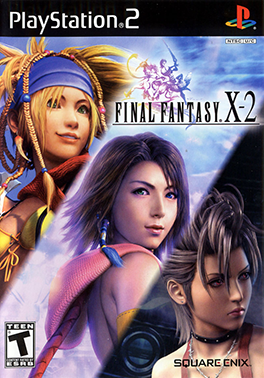
Final Fantasy X-2 is a 2003 role-playing video game developed and published by Square for the PlayStation 2. Unlike most Final Fantasy games, which use self-contained stories and characters, X-2 continues the story of Final Fantasy X (2001). The story follows Yuna as she searches for Tidus, the main character of the previous game, while trying to prevent political conflicts in Spira from escalating to war.

X-Men vs. Street Fighter is a crossover fighting video game developed and published by Capcom. It is Capcom's third fighting game to feature Marvel Comics characters, following X-Men: Children of the Atom and Marvel Super Heroes, and is the first installment in the Marvel vs. Capcom series. As the title suggests, the game includes characters from Marvel's X-Men franchise and the cast from Capcom's Street Fighter series. Originally released as a coin-operated arcade game in 1996, it was ported to the Sega Saturn in 1997 and the PlayStation in 1998.

Resident Evil 2 is a 1998 survival horror video game developed and published by Capcom for the PlayStation. The player controls rookie cop Leon S. Kennedy and college student Claire Redfield, who must escape Raccoon City after its citizens are transformed into zombies by a biological weapon two months after the events of the original Resident Evil. The gameplay focuses on exploration, puzzles, and combat; the main difference from its predecessor are the branching paths, with each player character having unique storylines, partners and obstacles.

1080° Snowboarding is a snowboarding video game developed and published by Nintendo for the Nintendo 64 in 1998. In the game, the player controls one of five snowboarders from a third-person perspective, using a combination of buttons to jump and perform tricks over eight levels.

Jumping Flash! is a platform video game developed by Exact and Ultra and published by Sony Computer Entertainment for the PlayStation. It was released on 28 April 1995 in Japan, 29 September 1995 in PAL territories and 2 November 1995 in North America. It was re-released through the PlayStation Network store on PlayStation 3 and PlayStation Portable in 2007, in 2012 on PlayStation Vita and again in 2022 on PlayStation 4 and PlayStation 5.

Crash Bandicoot 2: Cortex Strikes Back is a 1997 platform video game developed by Naughty Dog and published by Sony Computer Entertainment for the PlayStation. It is a sequel to Crash Bandicoot (1996), and is part of the Crash Bandicoot series.
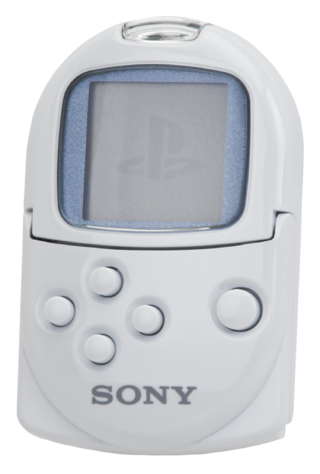
The PocketStation is a memory card peripheral by Sony Interactive Entertainment for the PlayStation home video game console. It was released in Japan in 1999. The device acted not only as a memory card, but was interactive itself via a small monochrome LCD display and buttons on its case. Many PlayStation games included software that could be downloaded and played on the PocketStation. A release in Europe and North America was planned, but was ultimately canceled. The PocketStation shares similarities with Sega's VMU for the Dreamcast.

Ace Combat 2 is a 1997 air combat video game developed and published for the PlayStation by Namco. It is the sequel to Air Combat and the second in the Ace Combat franchise. The player controls one of 24 different fighter jets through 21 different missions with certain objectives to fulfill, such as protecting a base from enemy fire, intercepting a squadron of enemies, or taking down an aircraft carrier.

Air Combat is a 1995 combat flight simulation video game developed and published by Namco for the PlayStation. Players control an aircraft and are tasked with completing a series of missions, with objectives ranging from destroying formations of enemies to protecting a specific target from enemy fire. Missions award money that is used to purchase new fighter aircraft, each with its own unique weapons and strengths.

Armored Core is a 1997 third-person shooter mecha video game developed by FromSoftware and published by Sony Computer Entertainment for the PlayStation. It was originally released in Japan by FromSoftware in July 1997 and in North America in October 1997 and Europe in 1998 by Sony Computer Entertainment. The game is the first entry in the Armored Core series. A digital port was released in 2007 in Japan and 2015 in North America on the PlayStation Network as a part of the PSone Classics line of games.

Aquanaut's Holiday is a video game for the PlayStation developed by Artdink. The game is an underwater simulation in which the player assumes the role of an overworked marine explorer who returns to the water for pleasure after having brought harmony to the world's oceans. Aquanaut's Holiday was followed by a few Japan-exclusive sequels on various PlayStation consoles.
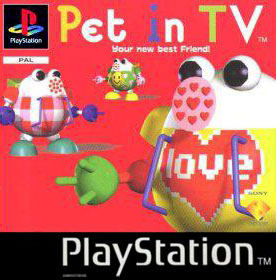
Pet in TV, known in Japan as Go For It! Morikawa-kun MK 2 (がんばれ森川君2号), is a pet-raising simulation developed by MuuMuu Co. Limited and published by Sony Computer Entertainment. The game was released in Japan in May 1997, and later in Europe in August 1998. Pet in TV consists of teaching a virtual pet known as a PiT tricks, getting it new costumes and learning what items are edible in the wild along with solving random puzzles around the PiT world.
Takeo Miratsu was a Japanese music composer for video games and anime. He was a member of Twin Amadeus, who composed songs for the Beatmania IIDX series of music video games. He died in September 2006 due to liver cancer, at the age of forty-six years.
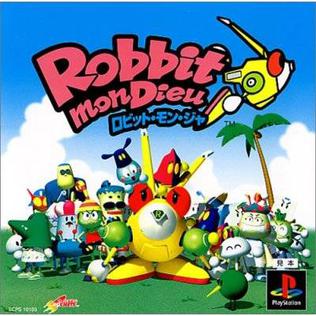
Robbit Mon Dieu (ロビット・モン・ジャ), sometimes referred to as Jumping Flash! 3, is a 3D platform game for the Sony PlayStation. It was developed by Sugar & Rockets and published by Sony Computer Entertainment for the PlayStation in Japan on October 14, 1999. It is the third and final game in the Jumping Flash! series. The game was later released on the Japanese PlayStation Network on July 26, 2007.
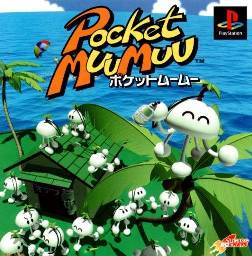
Pocket MuuMuu (ポケットムームー) is a 3D action game for the Sony PlayStation. It was developed by Sugar and Rockets and published by Sony Computer Entertainment and released exclusively in Japan in 1999. It is a spin-off game in the Jumping Flash! series. The game makes use of the Sony PocketStation peripheral. PocketStation is not required to play.

Killing Zone is a fighting video game developed by Scarab and published by Naxat Soft in March 1996 in Japan and by Acclaim in both July 1996 in North America, and September 1996 in Europe and Oceania, for the Sony PlayStation platform. The game was met with a poor critical reception.

Army Men: Sarge's Heroes is a third-person shooter video game and the fourth entry in The 3DO Company's Army Men series (1998–2003), which are based on the green plastic figures of the same name. Its Nintendo 64 and PlayStation versions were developed and published by The 3DO Company. The port for the Dreamcast was developed by Saffire and published by Midway, while another for Microsoft Windows was published by GT Interactive. Excluding the 1999 North American release for the Nintendo 64 version, the game was released in 2000.
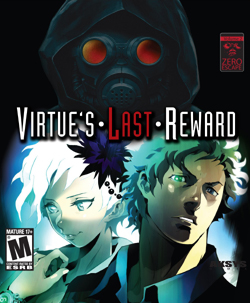
Zero Escape: Virtue's Last Reward is a 2012 adventure game developed by Chunsoft. It is the second installment in the Zero Escape series, and was originally released for the Nintendo 3DS and PlayStation Vita. The story follows the player character Sigma, who is abducted and forced along with eight other individuals to play the Nonary Game, which puts its participants in a life-or-death situation. As the story progresses, the characters unravel the secrets behind the Nonary Game.

Kileak: The DNA Imperative, known as Kileak: The Blood in Japan and Europe, is a first-person shooter video game developed by Genki for the PlayStation. It was published in Japan by Sony Music Entertainment in January 1995, followed by a North American and European release in September 1995 by Sony Computer Entertainment as a launch game for the console. Kimitaka Matsumae, former member of the S.S.T. Band, wrote the game's soundtrack.

Geograph Seal is a first-person mecha platform-shooter video game developed and published by Exact exclusively for the Sharp X68000 in Japan on March 12, 1994. The fourth and last title to be created and released by Exact for the X68000 platform late into its commercial life span, after being discontinued in 1993 by Sharp Corporation with the last model launched, it is widely considered a spiritual predecessor to the Jumping Flash! franchise by Sony Computer Entertainment.





















